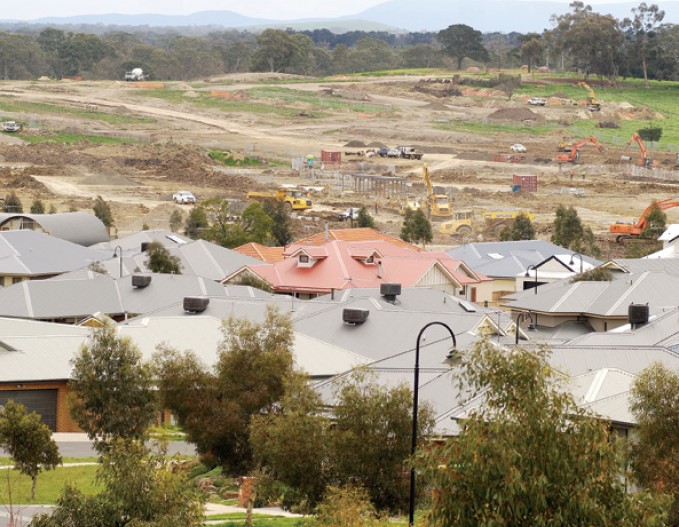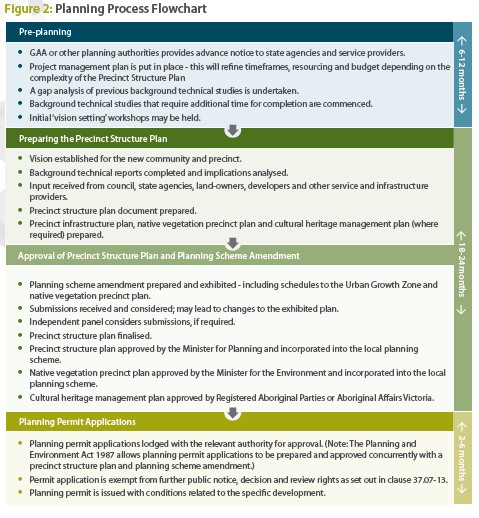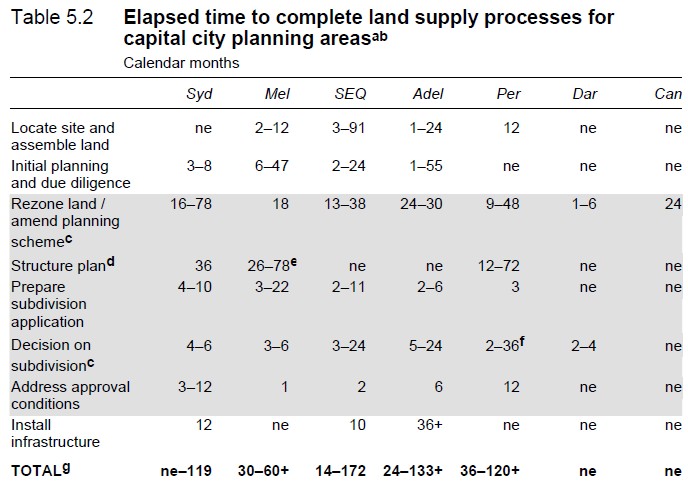
After yesterday questioning the Victorian planning minister’s plan to limit new development in established inner “areas with significant local character”, the Victorian Government has moved to expand Melbourne’s effective land supply by 60,000 lots by the end of 2014. From the AFR:
Mr Guy said the 60,000 lots were within the city’s urban growth boundary and would be released with precinct structure plans by the end of next year.
While Melbourne’s land market had been subdued for the past two years, and there was no under supply, Mr Guy said it was important for the land pipeline to be primed for a potential upswing in buying.
“There is no use in having growth areas if you don’t have land available for construction,” he said.
Speaking at the Urban Development Institute of Victoria’s national congress in Melbourne on Tuesday, Mr Guy said Melbourne’s growth areas combined produced the highest construction levels in Australia, a rate he wanted to maintain…
Brian Haratsis, chairman of economics and strategic planning company MacroPlan Dimasi, told the conference that more land released to market would improve housing affordability.
“It is always better to be in slight over supply,” he said.
Robert Pradolin, Victorian general manager residential for Australand, said more land rezoned for development helped to hold prices steady.
He said that while an over supply could cause short bouts of negative equity for land owners, the medium and longer-term price stability was important for when the market strengthens and in case demand spikes as it did in 2010.
Last year, the Victorian Government announced that it would extend the Urban Growth Boundary (UGB) by 7,000 hectares, effectively opening-up enough land to ultimately accommodate an additional 100,000 people. The move to expand Melbourne’s urban footprint followed the extension of the UGB by 41,000 hectares in 2009, which opened up enough land to eventually accommodate an extra 284,000 homes.
It’s important to note, however, that while land within the expanded UGB has been ‘zoned’ for development, much of it is many years away from being serviced and ‘development-ready’. The opening-up of the UGB was only the first step in the land supply process, with Precinct Structure Plans (PSPs) needing to be developed and approved before housing-related infrastructure and new homes can be built. As shown by the below flowchart, which comes from the Growth Area Authority (GAA), the PSP process typically takes between 2 to 3.5 years, depending on the application, thus slowing the supply process:

In its 2011 planning report, the Productivity Commission, noted that it typically took between 2.5 to 5.0 years for a Melbourne housing development to move from the site acquisition phase to the construction phase, with most of this time chewed-up by planning processes (see next table).

In light of the slow development approval times, the announcement that the planning minister would bring 60,000 lots online by next year, through the completion of various PSPs, is a positive move and should ensure that a ready supply of development-ready land in Melbourne is available to meet any unforeseen surges in demand, such as through another Rudd-style first home buyers’ grant or another late-2000s-style population influx.
The expansion of development-ready land should also put increased competitive pressure on developer land banks and place continued downward pressure on lot prices.
The Victorian planning minister should be commended for recognising that the planning system is inherently slow and unresponsive, and acting pre-emptively to boost ready supply in anticipation of future demand.

